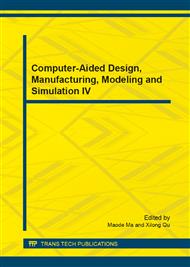p.371
p.375
p.382
p.386
p.392
p.397
p.401
p.408
p.412
Network Seepage Flow Research Based on Complex Network
Abstract:
Quantum communication is the information network communication cross technology developed in recent years. And it is a new communication technology by using network effects of quantum to carry out information transmission. Quantum communication is closely relative with quantum cryptography, quantum teleportation and quantum transport protocol. Quantum communication belongs to the complex network communication. Quantum bit is the basic unit of the network transmission. The wide range of application of quantum complex network is mainly the preparation of remote distance network seepage flow. In the process of quantum complex network information transmission, it is easily susceptible to environmental disturbances, so that it decreases the signal. This paper puts forward a scheme of solving quantum complex network transmission - network seepage flow. Traditional network seepage flow protocol scheme is the CEP network seepage flow agreement, but this solution has a certain limitation. The paper carries out the "target-swap" operation to CEP network seepage flow protocol, and obtains the QEP seepage flow protocol, and the superiority of this kind network seepage flow is proved through experimental network.
Info:
Periodical:
Pages:
392-396
Citation:
Online since:
October 2014
Authors:
Price:
Сopyright:
© 2014 Trans Tech Publications Ltd. All Rights Reserved
Share:
Citation:


